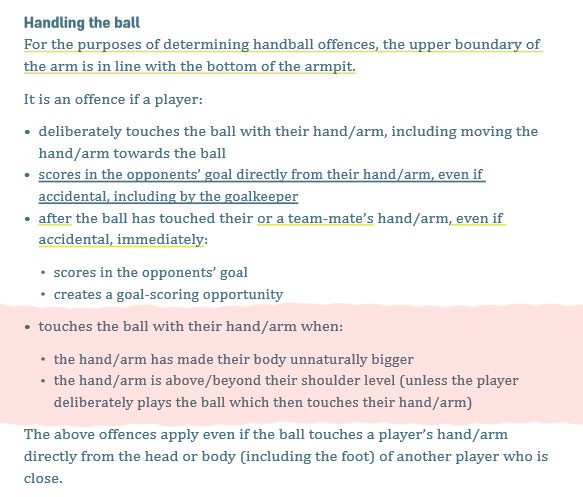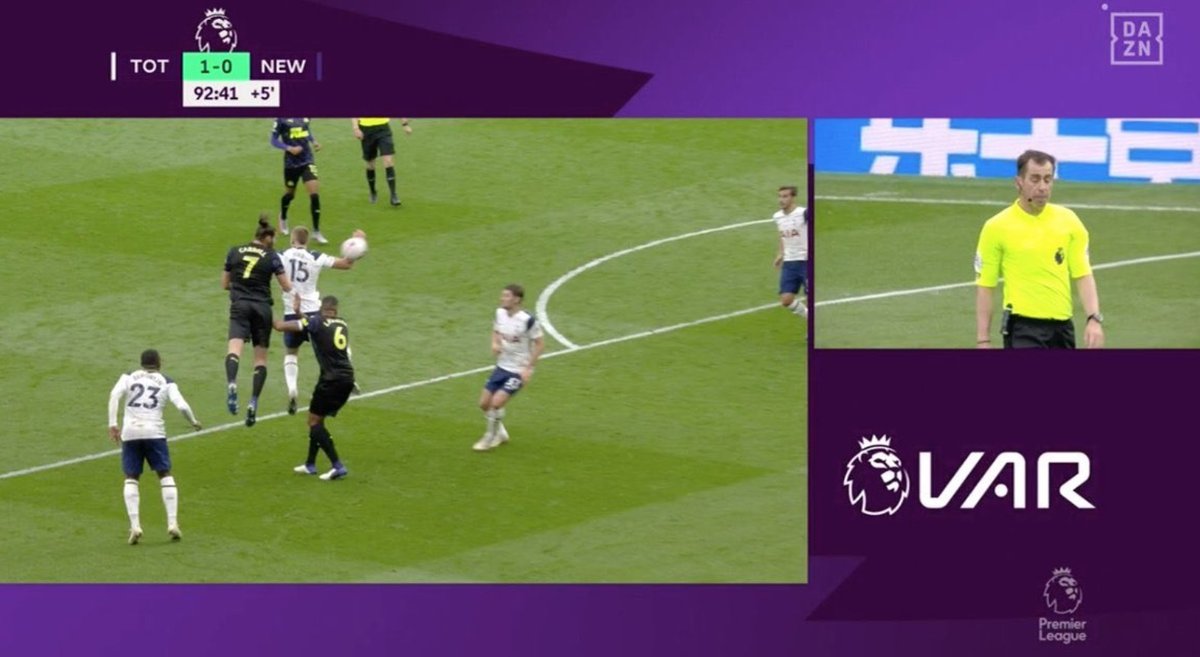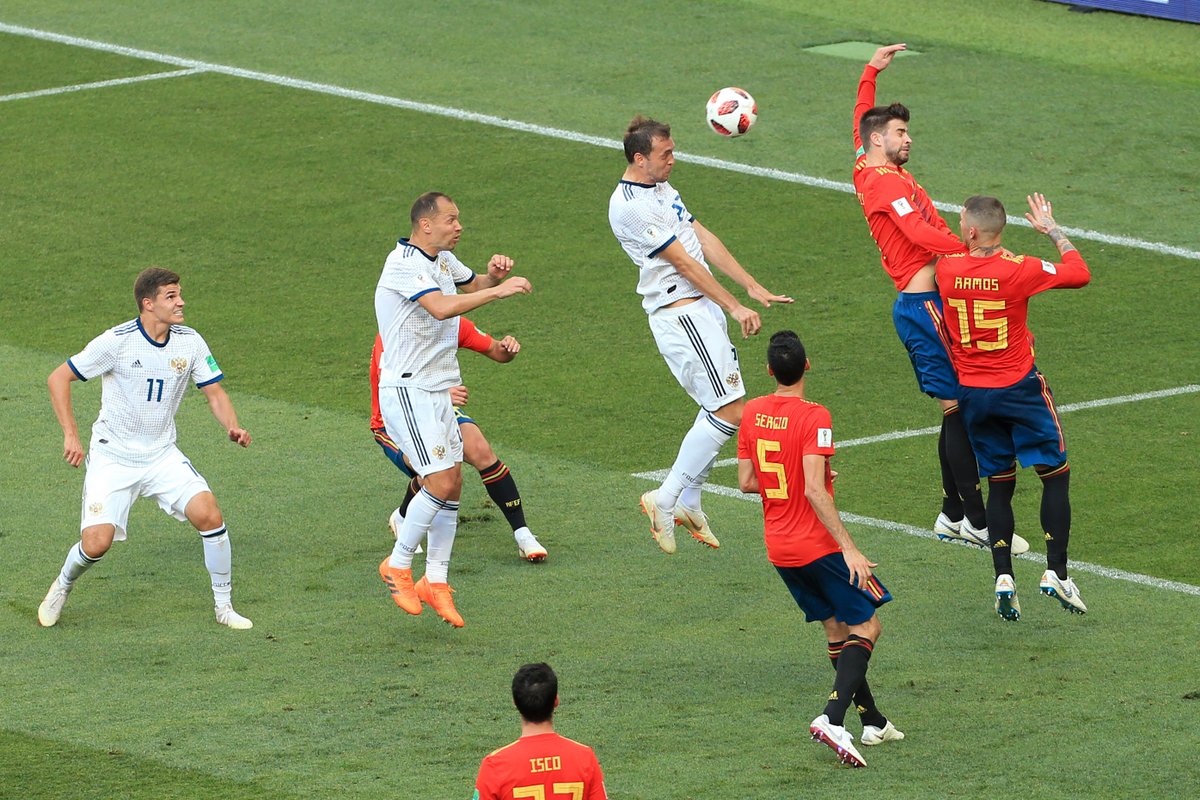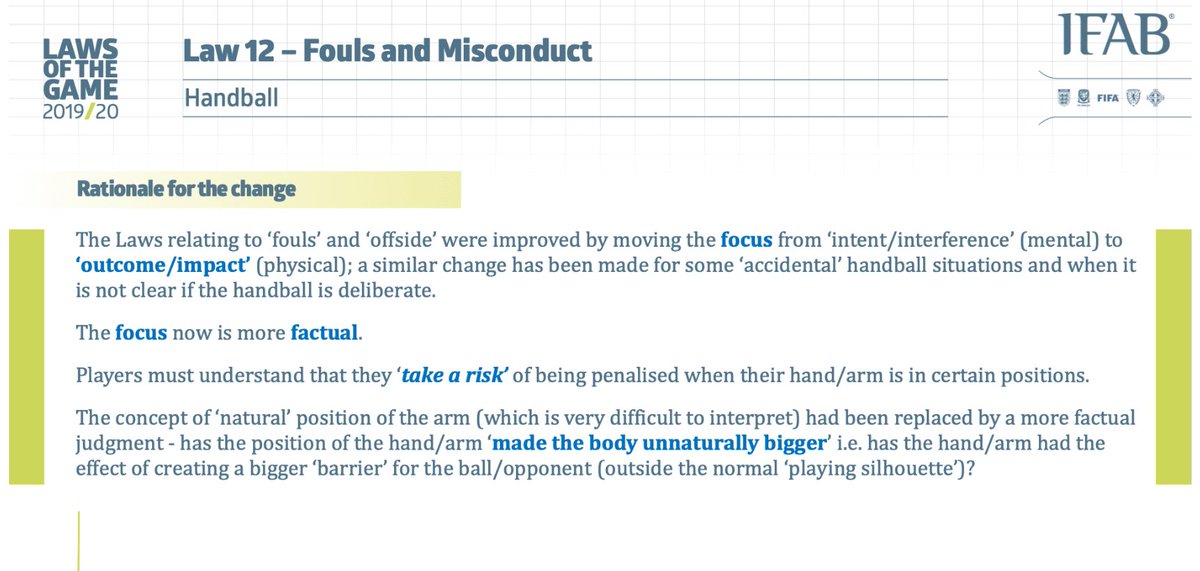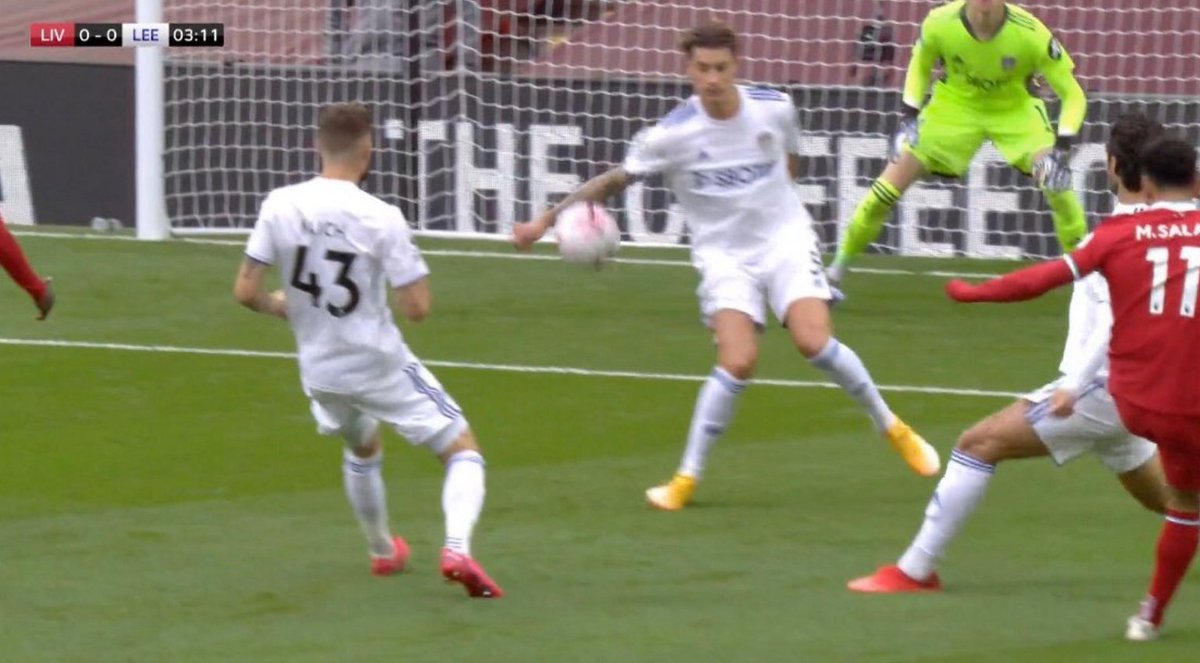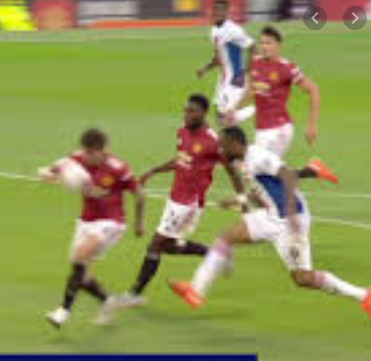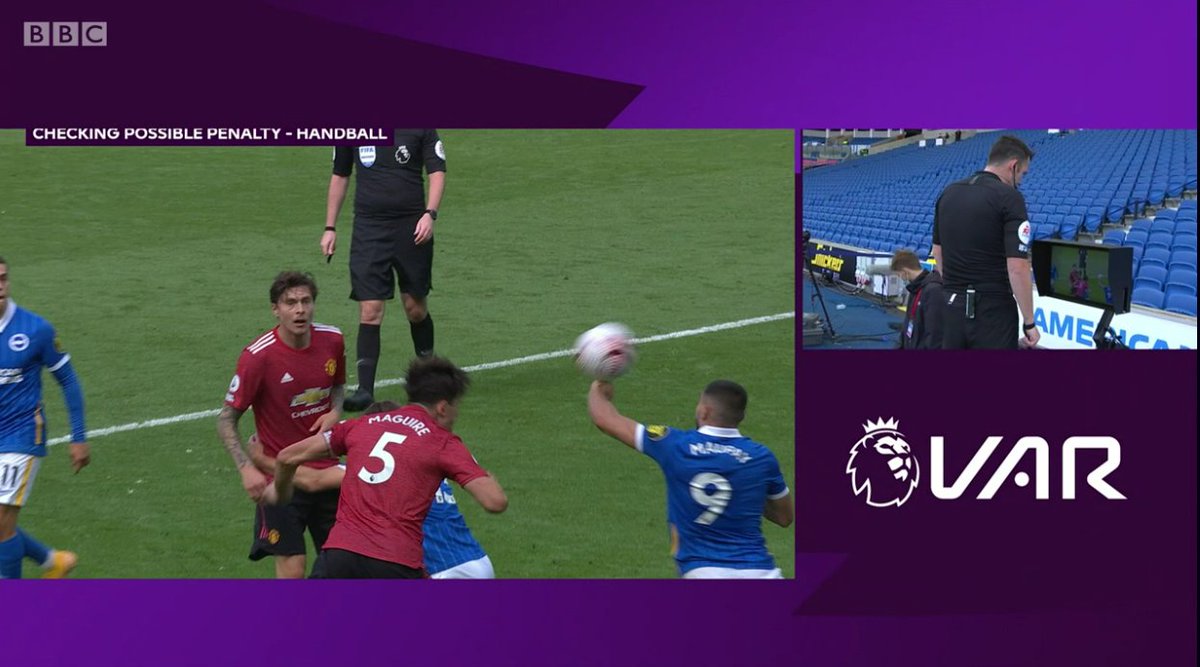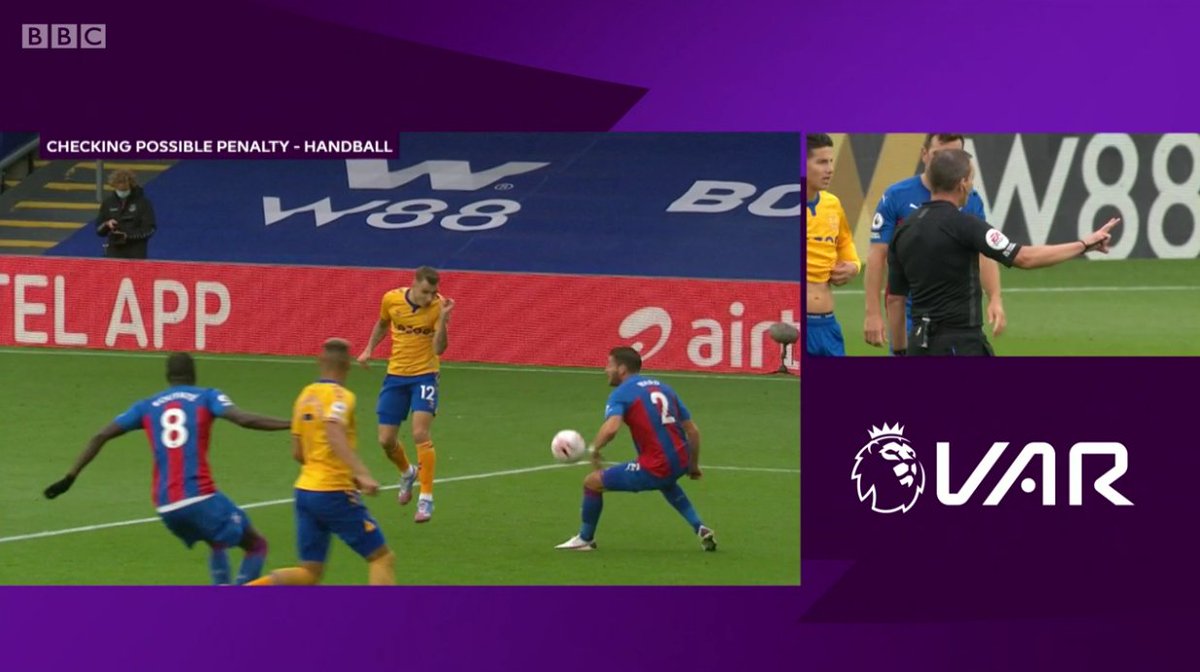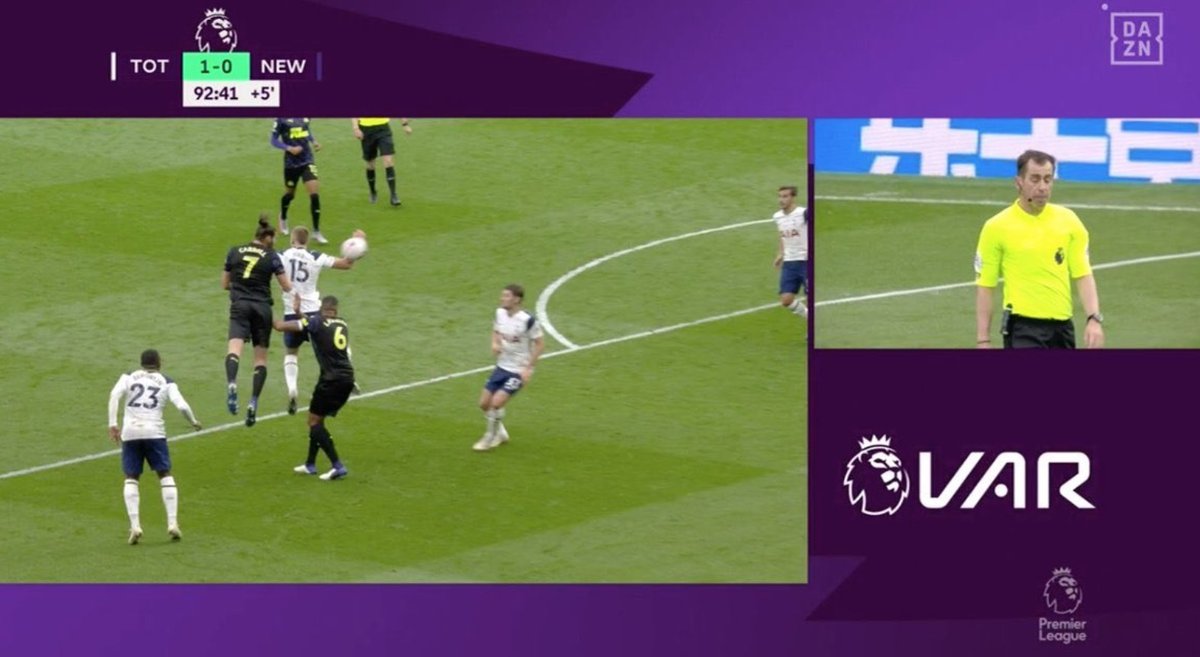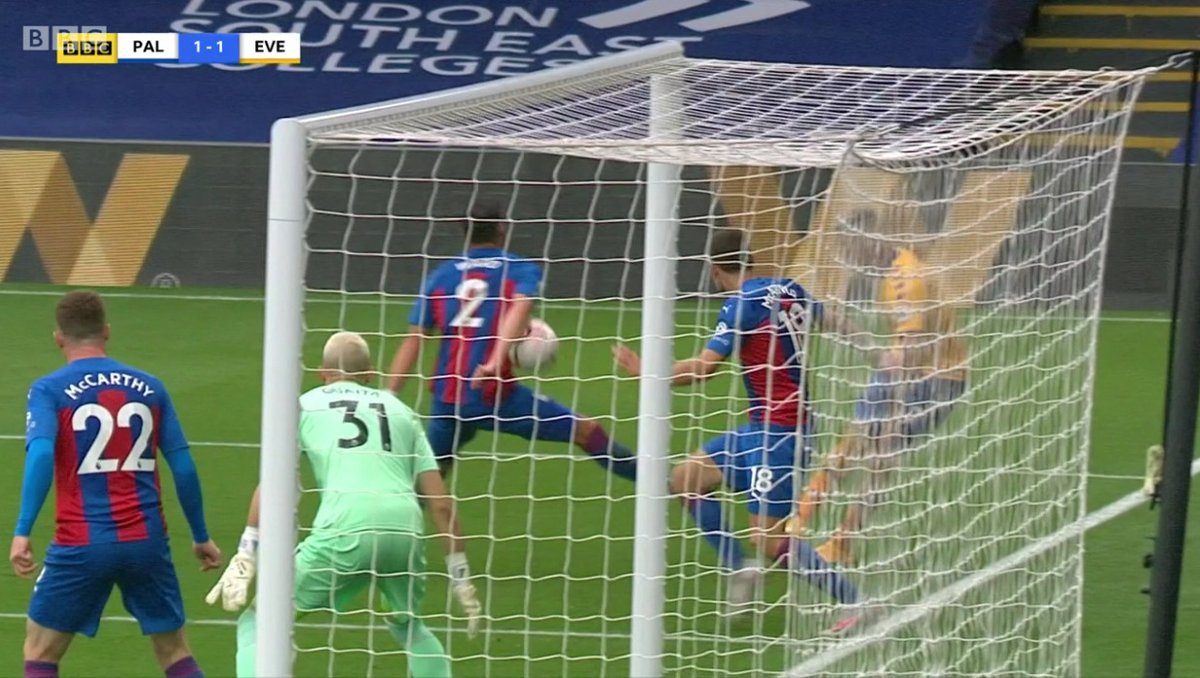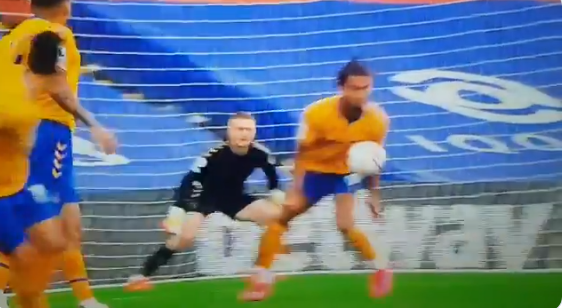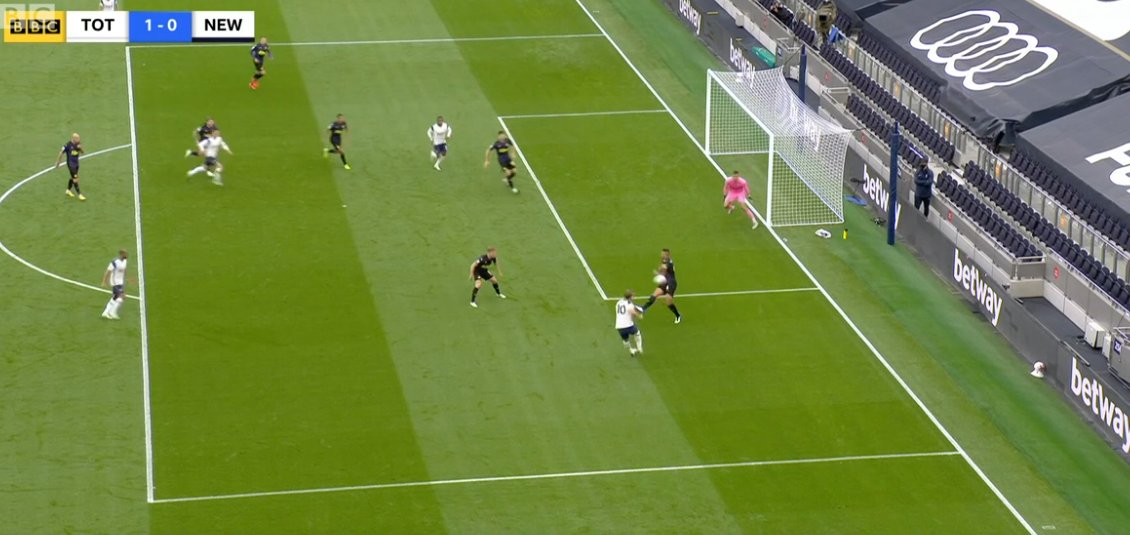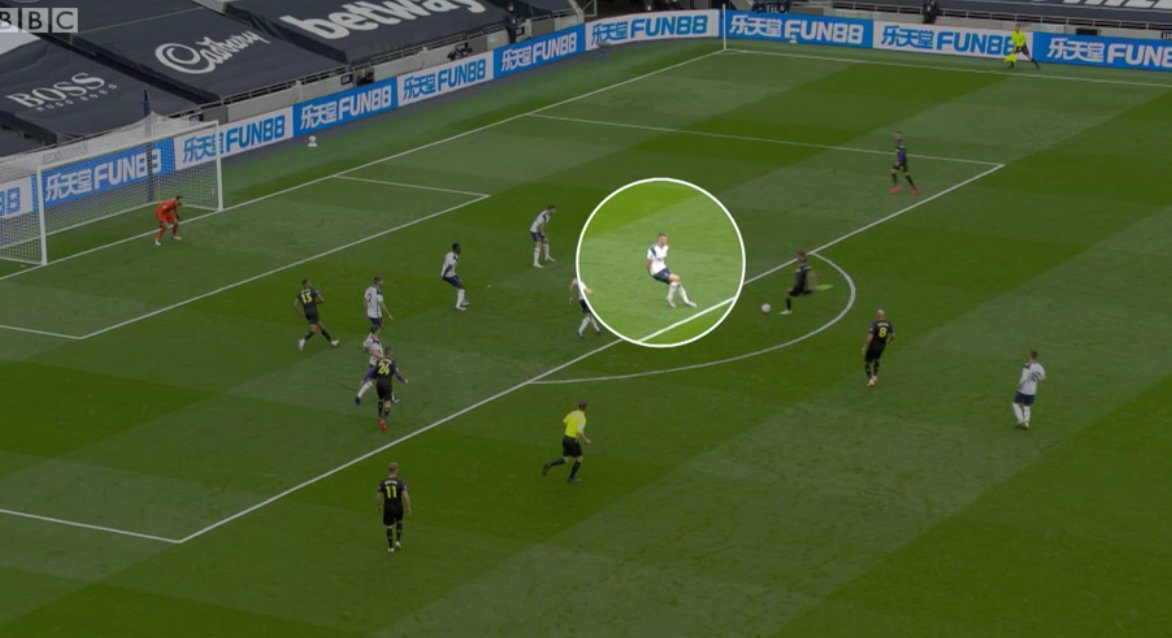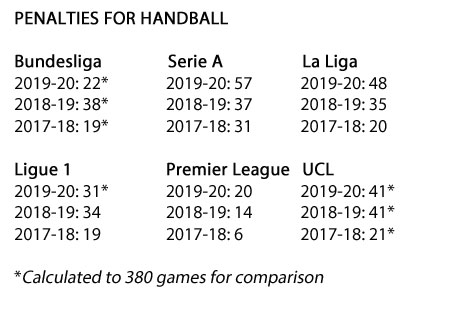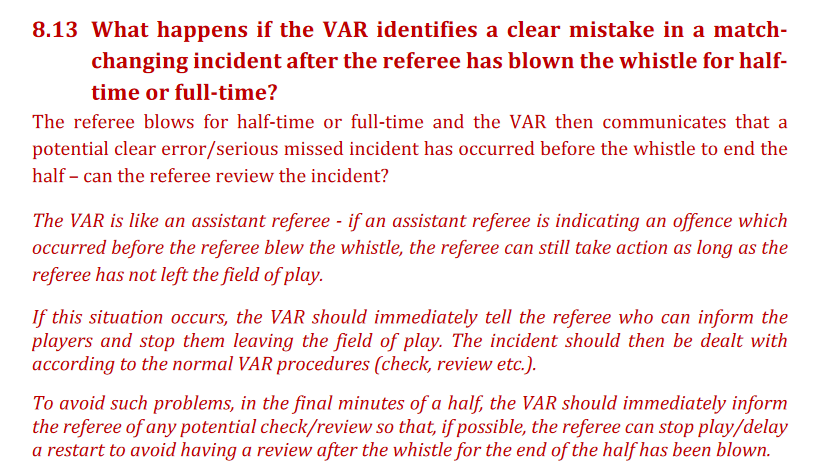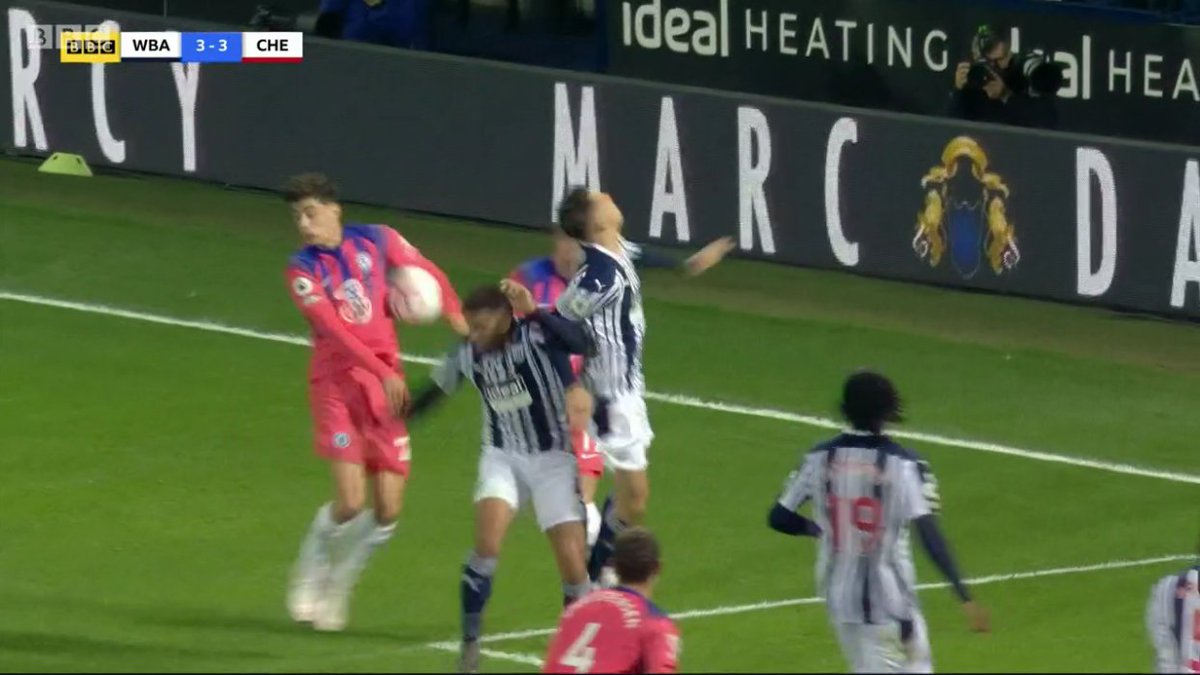Ok, for the VAR thread this week I am going to fully explain the interpretation of defensive handball, as imposed this season.
DISCLAIMER: It doesn& #39;t mean I don& #39;t think some of these decisions are crackers, but this IS how referees AT ALL LEVELS have been told to apply the law.
DISCLAIMER: It doesn& #39;t mean I don& #39;t think some of these decisions are crackers, but this IS how referees AT ALL LEVELS have been told to apply the law.
I fully understand the frustration of highly experienced and respected former refs.
But the fact here is the application FIFA/the IFAB demands is not as it may seem in the written Laws of the Game.
Here& #39;s why. It comes down solely to the definition of "unnaturally bigger".
But the fact here is the application FIFA/the IFAB demands is not as it may seem in the written Laws of the Game.
Here& #39;s why. It comes down solely to the definition of "unnaturally bigger".
We all in our own minds, understandably, consider a "natural" arm position to have a direct correlation to how a player may be moving: jumping, running etc.
However, the handball law, as altered by IFAB boss David Elleray, does not take this into account whatsoever.
However, the handball law, as altered by IFAB boss David Elleray, does not take this into account whatsoever.
It& #39;s all about the silhouette, the area of the body.
If the arms are not within the silhouette, no matter what movement you are making, they are considered to be making the body "unnaturally bigger".
Your natural shape does not have your arms away from the body.
If the arms are not within the silhouette, no matter what movement you are making, they are considered to be making the body "unnaturally bigger".
Your natural shape does not have your arms away from the body.
Elleray said: “If arms are extended beyond that silhouette, then the body is being made unnaturally bigger, with the purpose of it being a bigger barrier to the opponent or ball.
“Players should be allowed to have their arms by their side because it’s their natural silhouette.”
“Players should be allowed to have their arms by their side because it’s their natural silhouette.”
And let& #39;s be absolutely clear on this. There is ZERO relevance to a deliberate act in this offence. No matter what you may read elsewhere.
The red section is the most important part of the handball law and is absolutely the first point of call when making a decision.
The red section is the most important part of the handball law and is absolutely the first point of call when making a decision.
Of course, deliberate handball remains an offence and it appears in the written law.
But deliberate handball is NOT the factor in these decisions.
That line purely covers off a deliberate act remaining an offence if the arm is within the "silhouette".
But deliberate handball is NOT the factor in these decisions.
That line purely covers off a deliberate act remaining an offence if the arm is within the "silhouette".
UEFA refs& #39; chief Roberto Rosetti said: "When the arm is totally out of the body above the shoulder, it should be penalised."
This is an absolute cornerstone, and the reason why the Eric Dier handball decision was always going to be given.
This is an absolute cornerstone, and the reason why the Eric Dier handball decision was always going to be given.
To be clear, there is nothing in the interpretation about a player not being able to see the ball, and certainly no suggestion that would be a factor if the arm is above the shoulder.
Remember Gerard Pique at the World Cup (where the law was first used)? Penalty awarded here.
Remember Gerard Pique at the World Cup (where the law was first used)? Penalty awarded here.
So, back to Elleray& #39;s previous comment of the "natural silhouette". What does this mean?
It means the arm must be close to the body, in a similar position to being stood up straight.
If the ball hits your arms in front of the body this isn& #39;t an offence. Your body isn& #39;t bigger.
It means the arm must be close to the body, in a similar position to being stood up straight.
If the ball hits your arms in front of the body this isn& #39;t an offence. Your body isn& #39;t bigger.
The best way to think of it is this. Would the ball have continued on its path if it hadn& #39;t hit the player& #39;s arm?
If yes, it is likely going to be handball.
If no, then the ball would have hit the body. And that means the body is not being made unnaturally bigger.
If yes, it is likely going to be handball.
If no, then the ball would have hit the body. And that means the body is not being made unnaturally bigger.
This is from the detailed Laws update for 2019-20, clearly setting out how handball is now a factual decision and that players who "take a risk" can be penalised.
As clearly explained by the IFAB, the focus has been shifted. Is the arm creating a bigger barrier?
As clearly explained by the IFAB, the focus has been shifted. Is the arm creating a bigger barrier?
So, let& #39;s look at the six handball penalties awarded in the Premier League this season. (Deflections are irrelevant)
Koch - arm way out from the body
Lindelof - arm out from the body
Doherty - arm way out from the body
Koch - arm way out from the body
Lindelof - arm out from the body
Doherty - arm way out from the body
The other penalties awarded in the PL for handball:
Maupay - arm above the shoulder
Ward - arm out from the body
Dier - arm above the shoulder
I& #39;d say of the six the Ward penalty was the closest. As explained, Maupay/Dier now considered an automatic offence.
Maupay - arm above the shoulder
Ward - arm out from the body
Dier - arm above the shoulder
I& #39;d say of the six the Ward penalty was the closest. As explained, Maupay/Dier now considered an automatic offence.
Let& #39;s compare that to decisions that have not been given.
In each of these examples over the weekend, the ball hits the arm tucked into or in front of the body. Therefore, it would not be considered handball as the body is not made bigger.
In each of these examples over the weekend, the ball hits the arm tucked into or in front of the body. Therefore, it would not be considered handball as the body is not made bigger.
So how far out from the body can the arm be and still be legal?
This is a difficult one to put across, as there is some leeway in that the arms do not have to be pinned to the body.
But it& #39;s not huge and it& #39;s not even the width of a football.
This is a difficult one to put across, as there is some leeway in that the arms do not have to be pinned to the body.
But it& #39;s not huge and it& #39;s not even the width of a football.
It is actually a fairly simple law in practice, because it is now based on arm position and there is no place for the referee to "apply common sense".
The law is now so arbitrary that almost any time the ball hits the arm it could be interpreted as handball.
The law is now so arbitrary that almost any time the ball hits the arm it could be interpreted as handball.
One thing is for certain, we are going to be hearing players appealing for penalties almost every time the ball hits an opponent.
And defenders will defend with arms behind their backs, as MOTD pointed out.
And defenders will defend with arms behind their backs, as MOTD pointed out.
And just a further reminder that the Premier League is NOT applying the law differently to elsewhere (it was...).
As seen by the handball penalty stats across Europe this last two seasons.
As seen by the handball penalty stats across Europe this last two seasons.
That& #39;s enough for defensive handball now, I& #39;m sure we will back on this topic soon enough.
But just like attacking handball and armpit offside decisions (remember those?) this law isn& #39;t going to change. It is as intended and wanted by those in power at FIFA/The IFAB.
But just like attacking handball and armpit offside decisions (remember those?) this law isn& #39;t going to change. It is as intended and wanted by those in power at FIFA/The IFAB.
Couple of additional points. Firstly, the Man United penalty given after the final whistle.
This is perfectly within protocol (and was a stonewall pen). It would be crazy for a missed penalty offence to happen just before the ref blew the whistle and it not be reviewable.
This is perfectly within protocol (and was a stonewall pen). It would be crazy for a missed penalty offence to happen just before the ref blew the whistle and it not be reviewable.
And the tweak to the attacking handball law, meaning the Havertz handball before Chelsea equalised at WBA was not an offence.
It had to drop directly to Mason Mount. However, it fell to a WBA defender who made a failed clearance. This is no longer handball against the attacker.
It had to drop directly to Mason Mount. However, it fell to a WBA defender who made a failed clearance. This is no longer handball against the attacker.
If you want all the latest VAR stats for the season, you will find them in here. https://www.espn.co.uk/football/english-premier-league/story/4182135/how-var-decisions-affected-every-premier-league-club-in-2020-21">https://www.espn.co.uk/football/...

 Read on Twitter
Read on Twitter